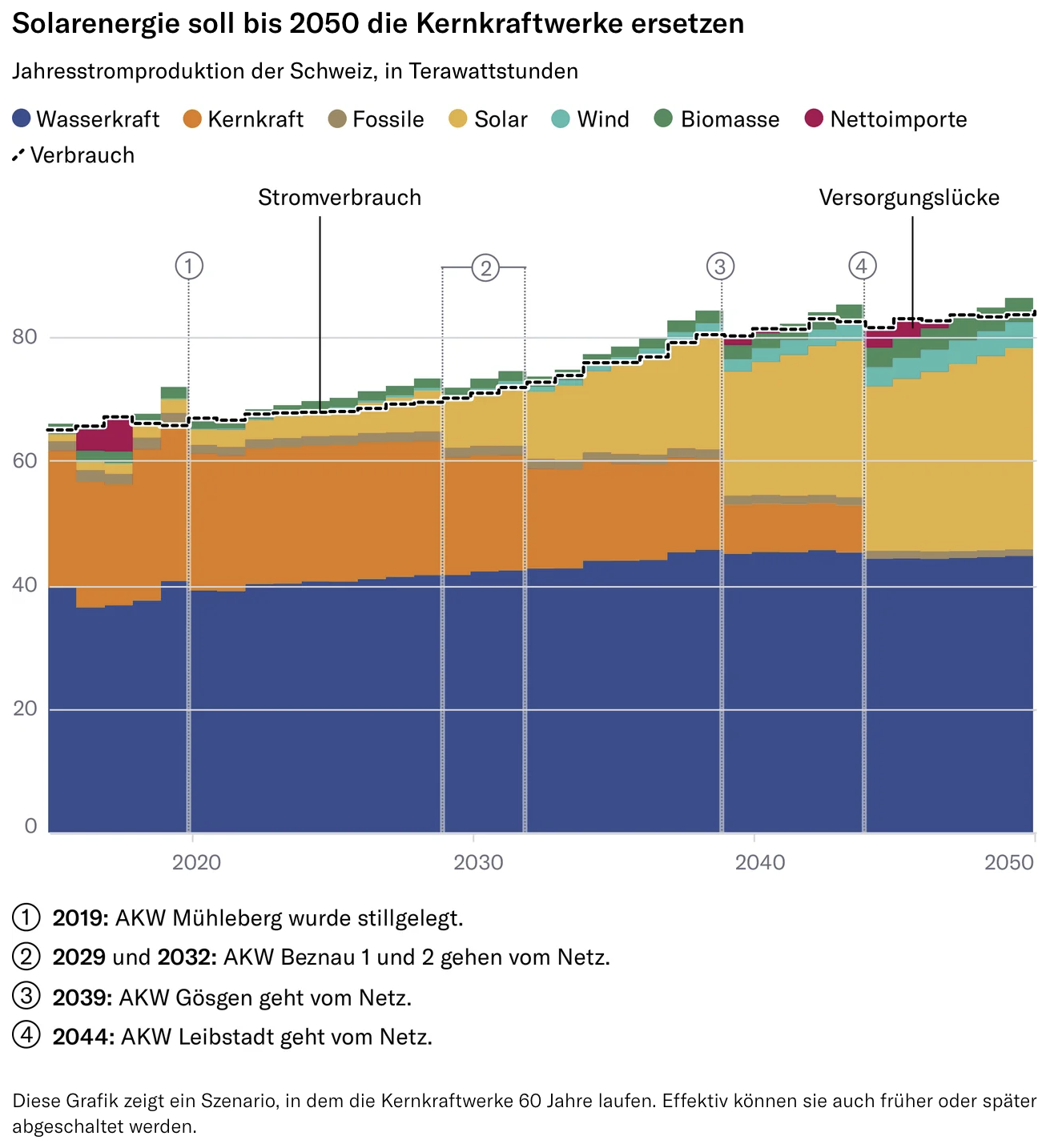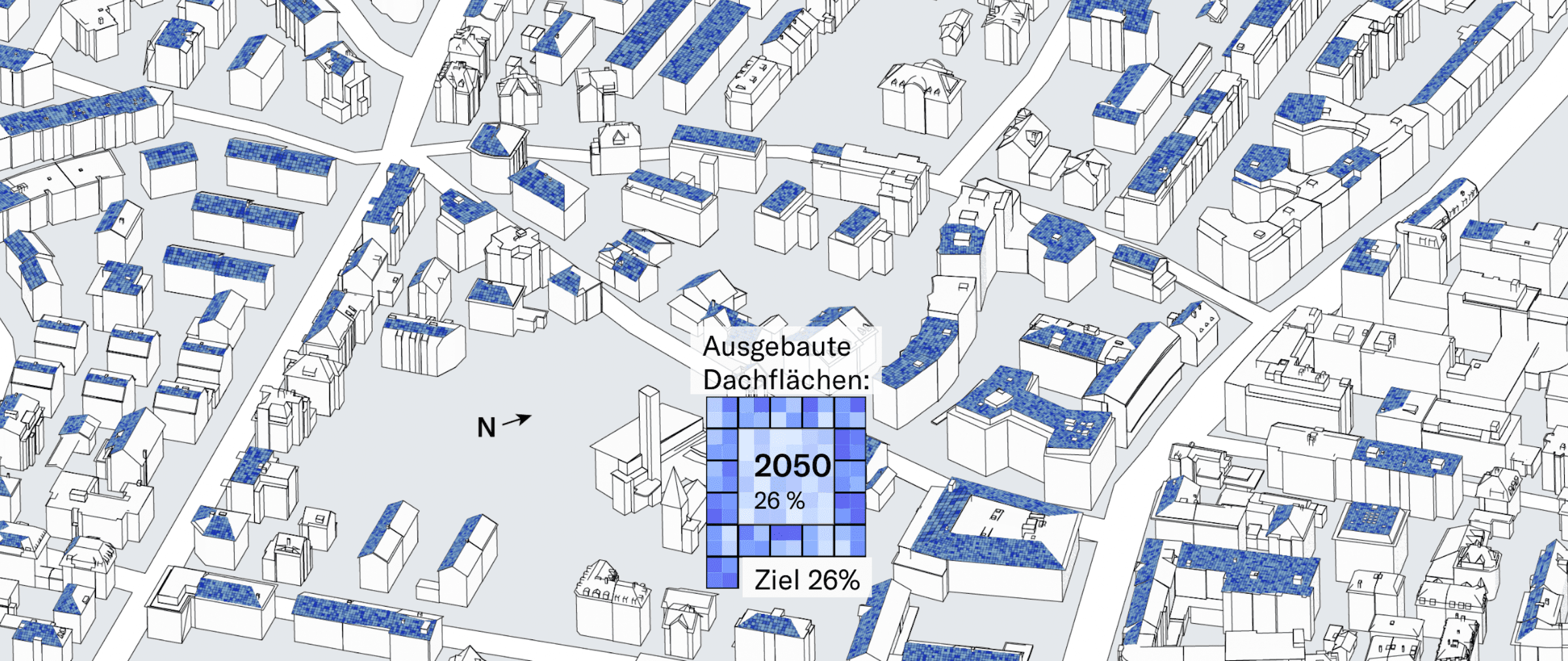The main element of this article was an image scroller, where you could see how fast the roofs of a Swiss city would need to be filled with solar panels to realise the plan the parliement has agreed on:
The following text will offer a brief look at two of the techniques employed to produce this visual: re-specification and a panorama-view for mobile devices.
Re-specification is the act of transforming aggregate statistical data into relatable concrete examples. The panorama view has been employed to make the large cityscape viewable as a whole on mobile devices without making it too small to be readable.
Re-Specification
From research on learning, it is known that it is far easier for people to generalize from concrete examples than the other way round. We generalize so readily, that it can often become problematic: when we generalize from individual examples. [1]
In political discussions, well-meaning people try to avoid the problem by presenting summary statistics. And although these should in principle be more helpful, they are not. Precisely because people have a hard time seeing to concrete implications that a summary statistic has for their lifes.
One such case is Switzerlands plan on how to transition from nuclear power plants to rooftop solar. The basic plan can be presented as a chart like this:

Solar power is added continuously and the the red gap, which represents net imports, kept small. While this looks rational and plausible, is it realistic? And how can we know?
Our knowledge of the world can not help us one bit looking at these numbers. But it can help if these numbers are shown on a concrete example. I call this "re-specification". Creating an example that represents the general case.
For this purpose we have created the model city "Sonnstetten". This model city behaves exactly according to plan and thus demonstrates what the plan is in a relatable way to citizens.
To paint this picture of Sonnstetten some additional information had to be gathered: what are typical roofs in a Swiss city? How much energy can be produced on one such roof and how many roofs are therefore needed each year? Luckily there is a 3D model of the roofs of the city of Zurich and luckily studies have already calculated the number of roofs required in 2050. With this, a reasonable approximation is possible.
Panorama-view
The cityscape consists of almost 5000 roofs. They simply could not be crammed on a mobile screen. We have therefore employed a novel and playful way for readers to explore the whole visual: a panorama-view, controlled by the gyroscope:
Using it feels like as if your phone is a window into the image. It's best to try it. We were able to use this technique because viewing the whole city was not essential to understanding the story. It is therefore completely optional to use the panoramic view. In hindsight this proved to be doubly important because we realized that moving your phone around like a scanner in public felt pretty awkward.
One challenge when creating this panorama-view was not to make it too sensitive. At first it reacted to every little movement: the image got so jittery as to become unreadable. We could even get some mild motion-sickness from it. The graphic is therefore locked until the magnitude of movement surpasses a certain threshold.
Production
The cityscape was produced in Blender based on a 3D-model of the city of Zurich and data on the suitability of each roof for solar power production. It took multiple weeks to manually add the solar cells to the roofs – year after year. Finally, we have exported each year as a separate image with the help of a script.
Daniel Kahnemann, "Thinking Fast and Slow", 2011 ↩︎
